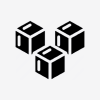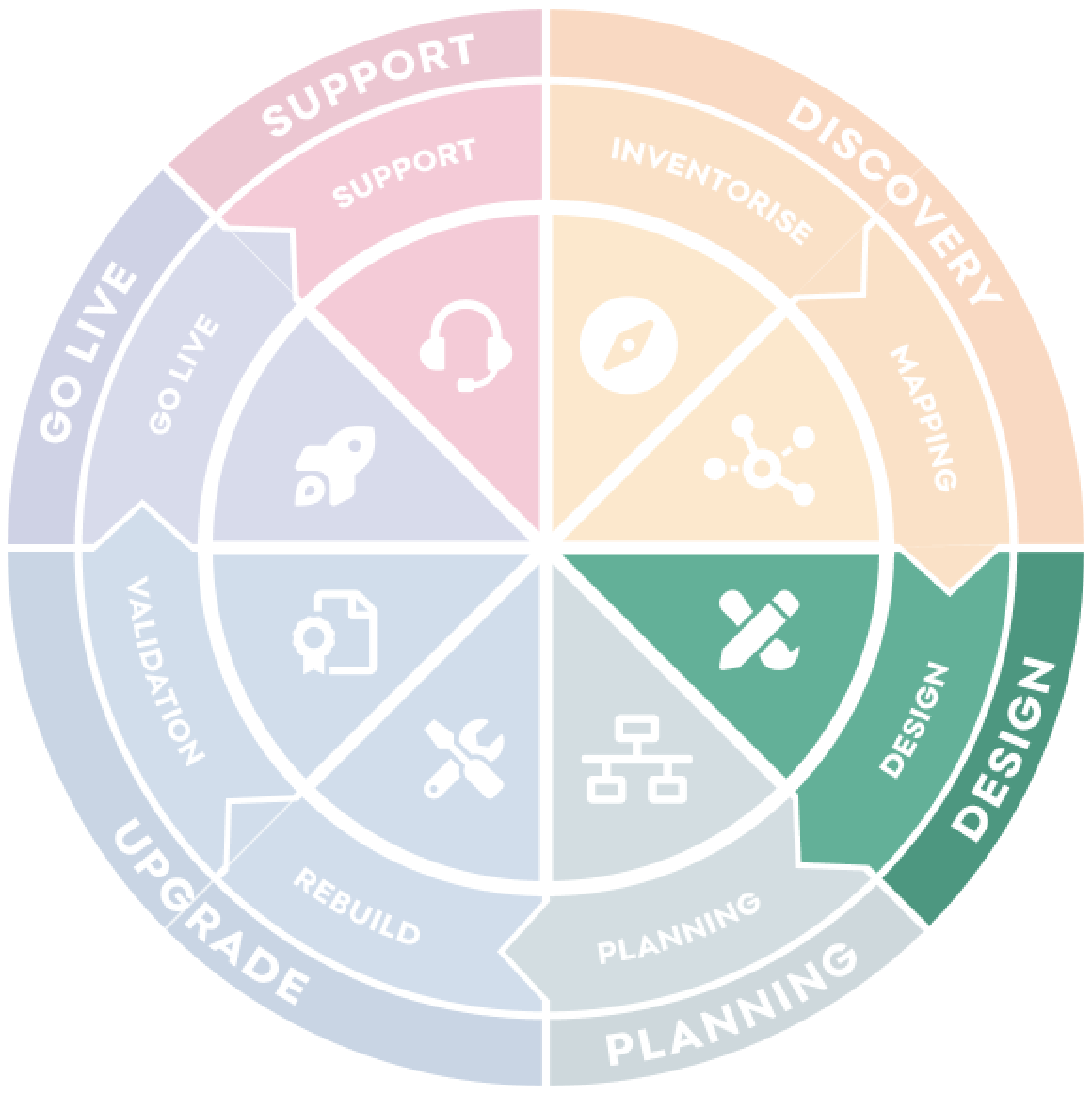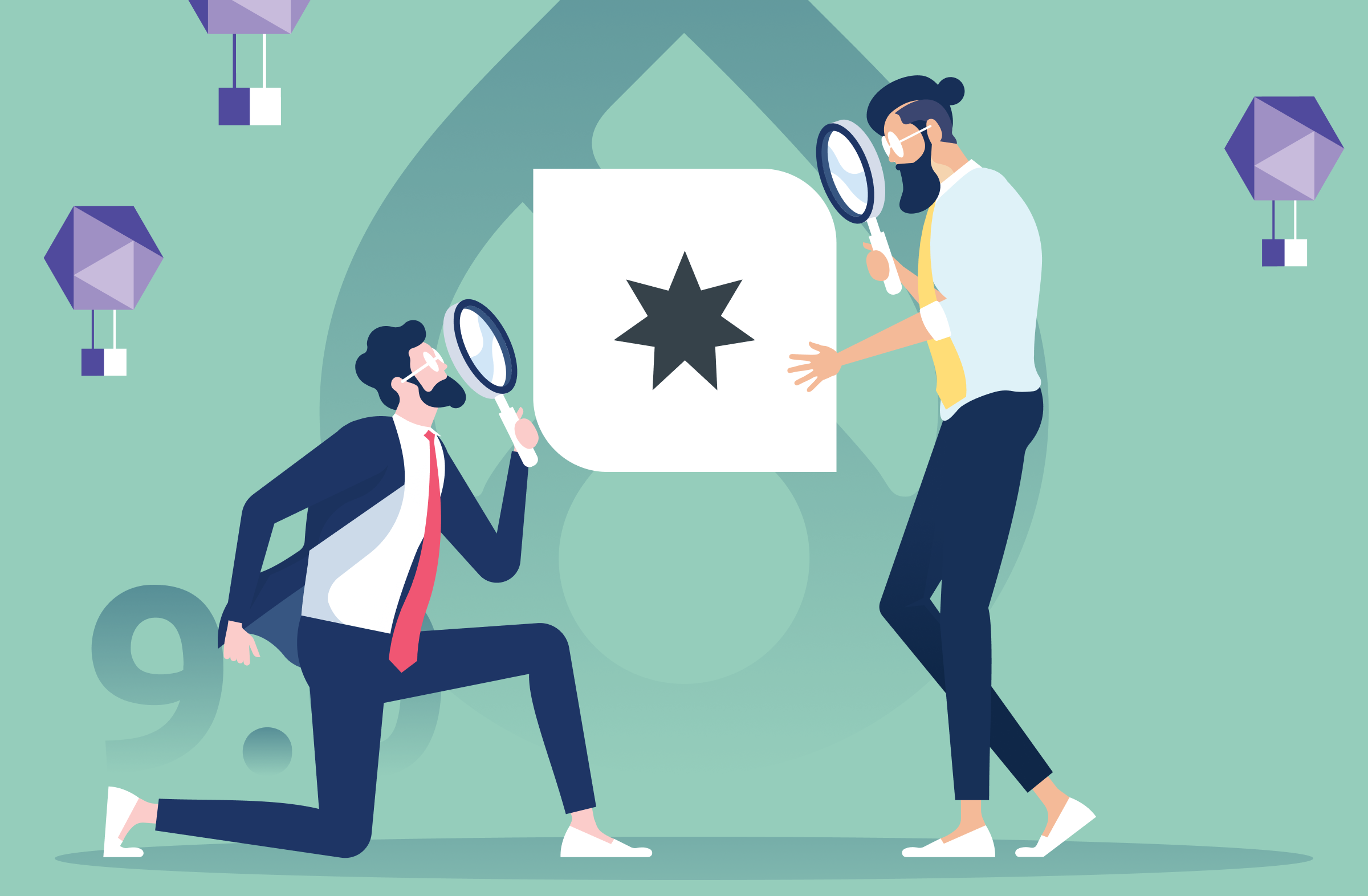
On this page:
- Overview
- 1. What are your upgrade options?
- 2. What are your upgrade responsibilities?
- 3. What influences upgrade complexity?
- 4. If you upgrade to D8 first, then what?
- 5. What’s involved in upgrading from D7?
- 6. Where and how do you start?
- 7. What resources do you need to upgrade?
- 8. Costs and timeline
- Can’t find the answers you’re looking for?
Overview
The following FAQs provide information related to upgrading your GovCMS PaaS Drupal 7 site to Drupal 9.
A list of all D9 FAQ topics can be found at GovCMS Drupal 9 upgrade FAQs.
1. What are your upgrade options?
Drupal 9 is not backward compatible with Drupal 7.
There was a major change in the underlying Drupal architecture after Drupal 7. Therefore, a simple upgrade path is not available from Drupal 7 to Drupal 9. This is also true from Drupal 7 to Drupal 8.
This means sites on Drupal 7 will require a rebuild and migration. Rebuild and migrate means that all functions and frontend theme templates need to be rebuilt on your target Drupal distribution, and all content will need to be migrated.
The following upgrade options are available to you:
If you are using the GovCMS Drupal 7 distribution:
Rebuild and migrate onto the GovCMS Drupal 8 distribution first (recommended)
Rebuild and migrate means that all functions and frontend theme templates need to be rebuilt on the GovCMS Drupal 8 distribution, and all content will need to be migrated.
Once on the GovCMS Drupal 8 distribution you can leverage the easier upgrade path to the GovCMS Drupal 9 distribution as soon as the pre-release is available.
GovCMS encourages this option if your budget and resources allow. The GovCMS D8 distribution is available and is stable. This will also reduce critical dependencies on the GovCMS Drupal 9 release date and reduce the risk of project delays.
Rebuild and migrate onto the GovCMS Drupal 9 distribution
Rebuild and migrate directly onto the GovCMS Drupal 9 distribution as soon as the release is available.
Choose this option if you can’t secure funding this budget cycle, or cannot commence the upgrade until after the release of the Drupal 9 distribution.
If you’re not using the GovCMS Drupal 7 distribution:
Rebuild and migrate onto your target Drupal 9 distribution.
You can start this immediately given there is no dependency on the GovCMS distribution release.
Rebuild and migrate complexity for both options will depend on the types and levels of customisations required (see PaaS Drupal 7 FAQ - What influences ).
For both options, a like-for-like rebuild is recommended. However, you can incorporate minor enhancements. If significant enhancements are required, then you should consider a new design and build.
If you’d like help to better understand your upgrade complexities then you can register for our free GovCMS D9 readiness workshop.
2. What are your upgrade responsibilities?
Since you’re PaaS it’s your responsibility to upgrade your Drupal 7 site on the GovCMS platform. The table below shows a summary of the key activities involved.
| Activity | Description |
|---|---|
Upgrade | Upgrade for Drupal 7 sites requires a full rebuild and migration. Rebuild and migration means that all functions and frontend theme templates need to be rebuilt on your target Drupal 9 distribution, and all content will need to be migrated. See PaaS Drupal 7 FAQ - What are your upgrade for pathways. |
Testing | Full regression testing involves validating all site functionality and identifying issues. |
Remediation | Remediation involves fixing all issues identified. |
Enhancements | Enhancements are optional and can involve either refactoring existing features or designing, building and theming new features. |
GovCMS will deploy your site live once it’s upgraded and approved by the Agency product owner.
3. What influences upgrade complexity?
The following factors influence rebuild and migrate complexity when upgrading from Drupal 7 to Drupal 8 or 9.
| Influencer | Description |
|---|---|
Content structures | Content types. Media. Taxonomies. Paragraphs. Number and make up of the content structures (including standard content types, media, taxonomies, paragraphs, etc.) influences upgrade migration complexity from PaaS Drupal 7. |
Modules | Ported modules. Deprecated modules. Similar modules. Drupal 7 modules are not compatible with Drupal 8 and Drupal 9 and thus a mapping is required for feature parity. The more modules used, the more site configuration required. The number of deprecated modules that do not have one-to-one simple upgrade paths typically influences the upgrade rebuild complexity. |
Theme templates | Basic theme. Extended theme. Custom theme. Level of site theme customisations (such as number of templates, stylesheets, CSS, JavaScript, number and fidelity of functions, and ‘cyclomatic complexity’, etc.) influences upgrade rebuild complexity. This similarly applies for the admin theme. Fewer out-of-the-box theme variations = more 1:1 mappings = easier rebuild. |
Views | Listing pages. Content blocks. Search pages. Views are used to build content listing pages, content blocks, search pages, etc. Views cannot be migrated/upgraded programmatically. Thus rebuild is required. The number of views and level of customisation influences upgrade rebuild complexity. |
Search | Faceted searches. Search indexes. Number and level of faceted search configurations and search indexes typically influences upgrade rebuild complexity. |
Webforms | Field validations. Dynamic interactions. API integrations. Number and complexity of webforms (number of fields, interactions, API integrations, etc.) influences upgrade rebuild complexity. |
Integrations | 3rd party integrations. API integrations. Custom integrations. Number and nature of integrations influences rebuild complexity. ‘Standard’ migrations, such as AB testing tools, Google Tag Manager, etc., require less upgrade rebuild effort than complex integrations such as batch migrations, etc. |
Pages | Content structures. Page counts. Manual or automated migrations. Number of pages combined with the number of content structures can inform upgrade migration complexity, and when manual vs automated migration of content is required. A site with only 100 content pages across 2-3 content types can be migrated manually however a site with 1000s of pages across multiple content structures requires automated migration scripts. |
4. If you upgrade to D8 first, then what?
If you’re using the GovCMS Drupal 7 distribution you may choose to rebuild and migrate onto the GovCMS Drupal 8 distribution first (recommended by the Dept of Finance).
If you’re not using the GovCMS Drupal 7 distribution you can rebuild and migrate onto your preferred Drupal 9 distribution immediately.
See FAQ PaaS Drupal 7 - What are your upgrade for more details on this.
If you do upgrade to the GovCMS D8 distribution first, then the next step is to run the relatively simpler upgrade process to the GovCMS D9 distribution once the release is available.
Note: Dept of Finance will design and build upgrade scripts for all SaaS D8 sites. As part of this process, it will also determine how to best map deprecated Drupal 8 distribution modules/features onto Drupal 9. Given this, it may be possible/beneficial to leverage these scripts to support your upgrade process when ready.
5. What’s involved in upgrading from D7?
At a high level, upgrading from Drupal 7 involves mapping your site’s content structures, features, and UI to Drupal 9 out-of-the-box content structures, features and theme templates and then addressing the gaps.
The illustration and table within provides a summary of the six key phases involved in rebuilding and migrating from Drupal 7 to Drupal 9.
Salsa has designed and made publically available our entire rebuild and migration project delivery process. Please visit Drupal 9 site migration project delivery blueprint to view.
Phase | Activity |
|---|---|
1. Discovery | An audit of functionality, design and content, which is then mapped to corresponding Drupal 9 features/modules, templates and content structures. We will also identify any gaps between your D7 site and GovCMS Drupal 9, and make recommendations on how to proceed. |
2. UI/UX design | Optional design to create new or adapted visual designs and user interactions. This is not typically required if rebuilding like-for-like. |
3. Planning | Sprint planning to build a groomed product backlog to inform sizing and priority. Developer onboarding in preparation for build. |
4. Upgrade | Upgrade involves core rebuild and migration activities. Features are developed, UI is themed and content is migrated. |
5. Go-live | Go-live deploys your site and delivers supporting documentation and training. |
6. Support | Support is optional and available to provide minor enhancements, issue investigations, bug fixes, content support and general enquiries, all via our service desk. |
6. Where and how do you start?
GovCMS recommends all Drupal 7 sites should aim to switch to Drupal 9 by the end of August 2022.
The first step we recommend is to start planning — this involves understanding your upgrade options, costs, risk and timelines.
If you haven’t already done this we have a few free resources to help you:
Free GovCMS Drupal 9 upgrade price guide: Our price guide helps you self-assess and understand your options, costs and timelines for upgrading like-for-like from Drupal 7 to D8 or D9.
Free GovCMS Drupal 9 readiness assessment: Our free readiness assessment provides you with a high level overview of upgrade options, costs and timelines.
If you know your scope and/or have a team and want to jump straight into it then the next step is to start your upgrade project.
In the FAQ PaaS Drupal 7 - What’s involved in upgrading from we outlined the high-level stages of the upgrade process, along with Salsa’s free GovCMS Drupal 9 upgrade project delivery blueprint. Our upgrade project blueprint provides the entire delivery process, including tools and templates, for rebuilding and migrating your Drupal 7 site to D8 or D9. We encourage you to use this blueprint as a guide for your own team to deliver your upgrade project.
If you require further support or direction with planning then you may consider one of our Drupal 9 assessment or advisory services:
- GovCMS Drupal 9 site assessment: A deep dive to assess your Drupal site to determine viable options, risks, mitigations, costs and timelines. We will provide formal recommendations to support budgeting and approvals.
GovCMS Drupal 9 upgrade technical advisory and support: Access to Drupal expertise to provide your upgrade project delivery team with technical advice and/or ad-hoc support.
GovCMS Drupal 9 upgrade site discovery: Our functional and technical Drupal experts pair up to facilitate a series of workshops to help create, groom and size your upgrade project backlog for prioritisation and planning.
Once you’ve completed your planning and you’re ready to start your upgrade project then you may consider the following service:
- Drupal 7 like-for-like upgrade to Drupal 8 or 9: Engage our team to rebuild your site like-for-like. We’ll run the audits, confirm the mappings and present your options.
More information can be found on our GovCMS Drupal 9 upgrade services page.
7. What resources do you need to upgrade?
If upgrading from Drupal 7 you’ll require a rebuild and migration.
The typical roles involved in a like-for-like rebuild and migration project are outlined below.
The roles can often be fulfilled by the same person.
The allocation for each role depends on the size and complexity of your rebuild and migration.
| Role | Responsibility |
|---|---|
Product Owner | Responsible for representing the business benefit of proposed solutions. Responsible for approving and ranking the user story backlog, accepting work achieved in sprints, and signing off on development milestones. |
Project Manager | Project coordination and management of risks, issues, timeline, budget, resourcing and stakeholder communications. |
SCRUM Master / Business Analyst | Provide expert advice on the functional specification. Responsible for refining and grooming the requirements and acceptance criteria as part of discovery and throughout the project. SCRUM Master will also facilitate agile ceremonies including sprint planning, demos and retros. |
Solution Architect | Solution architecture design. Facilitates technical decisions and alignment with all key stakeholders. Responsible for overall solution direction and roadmap, as well being the technical client liaison. Typically only required for complex upgrades where new/revised solution architecture is involved. |
Technical Lead | Provides implementation blueprint and technical solution direction, technical governance and engineering process. Responsible for user story estimations, code reviews, peering, coaching, and troubleshooting. |
Backend developer(s) | Backend Drupal development, integrations and content migrations, user story estimations, peering, coaching and troubleshooting. |
Frontend theme(s) | Frontend Drupal theme development, user story estimations, peering, coaching and troubleshooting. |
QA | Design and execute test cases (including automation if/as required), collaborate and verify fixes, etc. |
| Design Lead | Overall visual strategic direction, representing client’s brand while ensuring user needs are front-and-centre. Creating individualised designs while leveraging design systems for usability, accessibility and cost savings. |
| UI/UX Designer | Drives user-centred design, including creative workshops. Responsible for taking the client’s website design from low-fidelity wireframes to high-fidelity mockups for user testing. Works with the Design Lead to leverage relevant design system components, focusing on the user experience and user interface. |
8. Costs and timeline
Upgrading from Drupal 7 requires a rebuild and migration. See FAQ PaaS Drupal 7 - What are your upgrade for more details. Rebuild and migration costs are informed by site build configuration and complexity.
Site build and configuration complexity depends on the number and nature of eight key factors:
- Content structures
- Modules
- Theme templates
- Views
- Search
- Webforms
- Integrations
- Pages
See FAQ PaaS Drupal 7 - What influences for more details.
Cost also depends on whether you’re upgrading to the basic default theme, an extended theme or a custom theme.
PaaS vs SaaS hosting has little-to-no influence on the complexity and cost but Drupal 7 sites on PaaS generally have more complex site build configurations. This assumes you remain on your current hosting configuration.
The table below provides a price guide to rebuild and migrate your GovCMS Drupal 7 site.
| Rebuild and migration options, costs and timelines | Suitability and summary of inclusions |
|---|---|
Basic site: Out-of-the-box theme. Cost: $10K to $20K (ex-gst). Timeline: 2 to 4 weeks. Sprints: 1 to 2 discovery workshops. 1 to 2 build sprints. | For very basic sites with basic functionality that can be mapped to out-of-the-box features and theme templates with basic configuration. Configuration of out-of-the-box content structures, theme templates and views. Basic feature module configuration, basic search (no facets) and basic webforms. No integrations. Content migration of unlimited pages (with Merlin). |
Moderate site: Extended theme. Cost: $20K to $120K (ex-gst). Timeline: 4 to 8 weeks. Sprints: 1 discovery sprint. 2 to 3 build sprints. | For sites with moderate features and UI that can be mapped to out-of-the-box theme with moderate extensions and moderate backend configuration. Minor extensions to out-of-the-box theme templates, views and content structures. Configuration of out-of-the-box modules. Basic search with simple facets. Moderately complex webforms. Basic integrations. Migration of unlimited pages (with Merlin). |
Complex site: Custom theme Cost: $120K to $280K+ (ex-gst) Timeline: 8 to 16+ weeks. Sprints: 1 to 2+ discovery sprints. 3 to 6+ build sprints. | For complex sites with custom features and UI that can be rebuilt with Drupal using custom themes and custom backend configuration. Customisation of complex content structures, themes and views. Moderately complex feature module configuration, site search with complex facets and complex webforms. Complex custom integrations. Content migration of unlimited pages (with Merlin). |
Salsa has created a free comprehensive GovCMS Drupal 9 upgrade price guide that allows you to self-assess your project costs and prepare your upgrade budget. Our price guide is designed to allow you to self-assess based on your site configuration.
You can request this price guide here: GovCMS D9 price guide registration.
Alternatively Salsa has designed a free D9 readiness assessment service that gives a high level overview of your upgrade options, costs and timelines. With this service we take you through our four-step process to get you ready for Drupal 9.
You can register for this service here: GovCMS D9 readiness assessment registration.
Can’t find the answers you’re looking for?
Ask us. We love tough questions. Contact us for the answers you seek.















